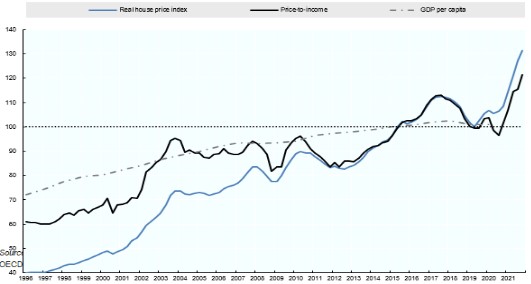“You can never understand one language until you understand at least two.” (Geoffrey Willans)
Bilingualism is defined by the Oxford English Dictionary (2016), as “Fluency in or use of two languages.” Defining bilingualism in sociolinguistic terms is a more complex matter, as it considers the linguistic, cognitive, developmental and sociological aspects. Knowledge of, and practical employment of, a second language promotes a greater awareness of language as code (Ray-Subramanian, 2011). The bilingual becomes acutely conscious of the container and not just its content. Bilingualism stimulates enquiry into language acquisition, in children and in adults. What are the most conducive times of life to learn a second language? What motivates individuals to become bilingual? Then, there are also the neurological and psychological aspects inherent within bilingualism. The following body of this report examines some of these salient dimensions of bilingualism.
Bilingualism
For many monolinguals, the idea of having two sets of language codes operating within your brain has been viewed as potentially confusing and a disadvantage (Meisel, 2005). The English-speaking populations of the US, UK and Australia have, in the main, held an indifference to bilingualism based on their language’s dominance within their worlds. There have been political and cultural barriers, historically, to the wide acceptance of bilingualism. Speaking and thinking in a potential enemy’s language has not been encouraged over the centuries and millennia. Language is, at times, an intimate means of communication; and has always been a bedfellow to parochialism and patriotism. Bilingualism has featured primarily within multicultural populations around the globe.
This enquiry will start by looking at language acquisition involving children living in bilingual homes. Children will learn to speak the language that surrounds them, wherever they are. Language is an important social instrument. The language they learn is not racially or ethnically defined. A Japanese child growing up in Australia, will learn to speak English with ease, and will very likely be bilingual, speaking Japanese at home, if the parents are native Japanese speakers (Crain, 1999). It is widely acknowledged in linguistic scholarship that learning a second language and developing bilingual fluency is best achieved in early childhood (Kuhls, 2010). The phonetic qualities of a language are more soundly grasped by children from birth to three years, and up to seven years. Adults learning a second language often struggle with phonological aspects, such as accents and correct pronunciation.
Noam Chomsky (2000) was the first linguist to champion the idea that language acquisition is an innately human skill; and that a child’s incredible ability to rapidly learn complex languages by the age of three is proof of this. Patricia Kuhls (2010) describes babies at six months to eight months of age, as language geniuses, and informs audiences that infants are intently listening for human sounds, which will make up the vocalised language alphabet or phonetic lexicon of their native language. The child is acutely listening to their mother and father speaking, or whoever is around them playing that essential role in their early development (cited in Johnson, 2016). Chomsky (2000) would overhaul many of the old ideas about how children learnt languages; it was not by laborious trial and error or mimicking their parents. Crain (1999) emphasises the child’s innate language ability and diminishes the role that parents play in teaching children to speak grammatically correctly. Chomsky’s Universal Grammar and the concept of Parameters would reveal underlying structural links between languages once thought to be widely divergent (Baker, 2001). Children were, it seems, hard wired for languages and had an in-built adherence to a hierarchical semantic structure, which exists in languages as superficially different as Chinese Mandarin and English (Chomsky, 1998).
The FOXP2 gene has now been identified as being associated with language competence in our DNA. Language areas within our neural tissue have been recognised as being involved in language processing and production. Neural imaging has conclusively shown brain activity during cognitive tests in specialised parts of the brain. Broca’s Area is involved in generating speech and Wernicke’s Area is where speech is comprehended; and they are both usually located in the left hemisphere of the cerebral cortex. Two main types of neural imaging techniques have been developed to observe brain anatomy and activity for localised cognitive functions. They are structural imaging techniques like: Computed Topography (CT) scanning, Magnetic Resonance Imaging (MRI) scans and Diffusion Tensor Imaging (DTI) which focus on brain anatomy. There are also functional imaging techniques which observe brain activity, and these are: Positron Emission Tomography (PET), Functional Magnetic Resonance Imaging (fMRI), Transcranial Magnetic Stimulation (TMS), Electroencephalogram (EEG) scans and Magnetoencephalography (MEG) scans. These devices utilise a variety of techniques that may include radioactive isotopes, or tracking proton densities, or measuring electromagnetic fields (Johnson, 2016).
“Research in cognitive psychology, linguistics, and cognitive neuroscience,” has shown that bilinguals develop higher levels of cognitive control (Kroll, Bobb & Hoshino, 2014). These cognitive skills have been seen in studies to serve their bilingual owners well in their old age, shielding them from mental degradation to a greater degree than monolinguals. There is evidence, provided by an analysis of their use of cognates and/or interlingual homographs, which indicates that both bilingual languages are active regardless of the holder’s intention at the time. Cognates are words that appear and mean the same thing in both languages, and interlingual homographs are words that look similar but have different meanings. In studies, the bilinguals recognise the cognates quicker than the control group of monolinguals, but take longer to process the interlingual homographs (Dijkstra, Grainger, & van Heuven cited in Kroll, Bobb & Hoshino, 2014). Listening comprehension tests by Marian and Spivey (cited in Kroll, Bobb & Hoshino, 2014) have also demonstrated this bilingual coactivation of language skills. Language is adaptive; and the bilinguals show that their first language is changed by their absorption and use of their second language. Kroll, Bobb and Hoshino give examples of Spanish-English bilinguals who adopt an English form of sentence parsing in their native Spanish, after prolonged exposure to English (Dussias & Sagarra cited in Kroll, Bobb & Hoshino, 2014).
Neuroimaging research identifies that the functioning of either bilingual’s languages occur in the same neural tissue (Abutalebi, Cappa, & Perani cited in Kroll, Bobb & Hoshino, 2014). Further brain imaging studies have shown bilinguals to be more efficient than monolinguals in cognitive control tests (Abutalebi et al. cited in Kroll, Bobb & Hoshino, 2014). A recent subcortical shape analysis observed Spanish bilinguals exhibiting bilateral expansion of putamen and thalamus over control group monolinguals (Burgaleta, Sanjuan, Ventura-Campos, Sebastian-Galles & Avila, 2016). This analysis of a large sample showed “fine-grained regional differences” between bilinguals and monolinguals in the morphology of the basal ganglia and thalamus, and the left pallidum and right caudate nucleus. This suggests to the researchers that extended employment of two languages simultaneously from early development has had a visible effect upon brain morphology at the subcortical level.
In a fMRI study, using a nonlinguistic switching task to compare younger and older adult bilinguals and monolinguals (cited in Kroll, Bobb & Hoshino, 2014) results indicated a noticeable positive effect on the older bilinguals over their monolingual peers. The cognitive control efficiencies protected the bilinguals from the symptoms of dementia and similar diseases.
Another study in Montreal, in the nineteen sixties, by Peal and Lambert (cited in Edwards, 2005) examined ten- year-olds from equally middle class backgrounds and found that the bilinguals were superior in concept formation, more mentally flexible and exhibited a wider range of mental abilities. There have been conflicting outcomes from numerous studies into bilingualism, since the first known study by Ronjat in nineteen thirteen (cited in Meisner, 2005); and recent scholarship has pointed to a lack of objectivity in many of the known studies into bilingualism. Meisner (2005) reports that strong biases, either against or for bilingualism, and an unreliability due to many of their authors lacking specialist language study qualifications, have contributed to the inconclusive status of studies into child bilingualism. More recent studies have begun to address these failings and show a shift toward appreciating the different uses that child bilinguals make of each language, rather than focusing on a strict comparison of competence in each of the languages (Meisner, 2005).
“The most important insight gained from studies on child bilingualism over the past 25 years is perhaps that simultaneous acquisition of two or more languages can indeed be qualified as an instance of first language acquisition.” (Meisner, 2005)
Simultaneous bilinguals are now recognised as a sub-classification, and Sequential bilinguals another, where the second language is acquired subsequently to the first (Pena & Bedore, 2015). Linguists are particularly interested in how the bilingual child manages the two lexicons and grammatical systems inherent within the languages. Differentiation of language systems has been an important focus of the research into bilingual acquisition. Language mixing and/or code switching within child bilinguals is studied chronologically to assess at what age the children have developed differentiated language systems. Results have shown, that by two years, the bilingual child is choosing the “language according to addressee” (Meisel, 2005). A chronological approach has also been taken into studies assessing the optimal age for bilingual language acquisition and whether the critical period hypothesis is backed up by empirical evidence (Meisel, 2005). This hypothesis states that after the optimal age range, the acquisition of further languages show substantial differences in the fluency of grammatical knowledge attained by the older child.
Sociolinguists have developed a typology of bilingualism, which classifies bilinguals into various categories based on their linguistic, cognitive, developmental and sociological characteristics (Butler & Hakuta, 2005). The main groupings include: Balanced Dominant at the top of the scale; Compound Coordinate Subordinate; Early Simultaneous Sequential Late, Incipient Receptive Productive; Additive Subtractive; Elite Folk; Circumstantial Elective; and Bicultural L1 Monocultural L2 Accultural Decultured. The value of this typology conveys how intrinsically linked language, identity and culture are within human beings. The social setting where you learnt your second language can greatly affect the recipient’s linguistic behaviour (Butler & Hakuta, 2005).
A recent study (Stocco & Prat, 2014) into executive functioning, comparing highly proficient bilinguals with monolinguals, tested both groups via Rapid Instructed Task Learning (RITL) of novel tasks. The results showed that bilinguals were considerably faster in the execution of the novel instructions. The test also involved practiced tasks and there was little or no difference between monolinguals and bilinguals in the performance time of these. Bilinguals could execute the novel tasks as quickly as the practiced tasks, whereas the monolinguals were noticeably slower. Neuroimaging as shown in Fig 1. reveals significant clusters of activity in the bilinguals during the execution of the novel tasks.
Hakuta stresses the need to understand bilingualism from a social perspective, a priori to empirical neuroscientific evidence, because the brains of bilinguals are primarily affected by their social context (Hakuta, 2009). This is where the bilingual typology classifications can contribute to refining research into bilingualism to produce information of real worth.
In summing up this report into bilingualism, the brevity of this examination only reveals the complexity inherent within this brain and language topic. The emphasis here, has been upon child bilingualism, as this focuses attention on the integral role of language acquisition. The recognition of language as an innately human faculty underpins this. This enquiry shows that very early stage development of language is the optimal time to learn one or more languages. Also, that social contexts impact considerably upon motivations to become bilingual; migrant children invariably become bilingual in supported environments. Neuroscience is providing a way to understand brain anatomy as it relates to language, and more specifically bilingualism. Sociological factors must be qualitatively included in the equation, if we are going to receive any data of value from these studies. The type of bilingualism exhibited by the test subjects, overwhelmingly, affects the results. There are clear indications that bilingualism can and does improve cognitive control; with positive outcomes delaying dementia type diseases in elderly bilinguals. The evidence shows that bilingualism offers benefits for human beings both cognitively, culturally and, of course, linguistically.
©Robert Hamilton
REFERENCES
Mark, C. Baker. (2001). The Atoms of Language. New York. Basic Books.
M, Burgaleta, A, Sanjuan, N, Ventura-Campos, N, Sebastian-Galles & C, Avila. (2016). “Bilingualism at the Core of the Brain: Structural differences between bilinguals and monolinguals revealed by subcortal shape analysis.” Neurolmage, 125. pp 437-445
Noam, Chomsky. (2000). “Language and its Design: The Delhi Lecture”. Architecture of Language. Nirmalangshu, Mukherji, (ed). Oxford University Press, New Delhi.
Noam, Chomsky. (1998). On Language. The New Press. New York.
Stephen, Crain. (1999). An Introduction to Linguistic Theory and Language Acquisition. Malden. Blackwell Publishers.
John, Edwards. (2005). “Foundations of Bilingualism.” The Handbook of Bilingualism. Bhatia, Tej K. and William C. Ritchie (eds). Blackwell Publishing, Blackwell Reference Online. Viewed 15 October 2016 http://www.blackwellreference.com/subscriber/tocnode.html?id=g9780631227359_chunk_g97806312273594
K, Hakuta. (2009). Encyclopedia of Neuroscience, Elsevier, Amsterdam. pp 173-178
- Johnson. (2016). Week three: Language in the Brain. [Video Lecture]. COGX202, Macquarie University, Sydney, Australia. Viewed 15 September 2016.
- Kroll, S. Bobb & N. Hoshino. (2014). “Two Languages in Mind: Bilingualism as a Tool to Investigate Language, Cognition, and the Brain”. Current Directions in Psychological Science. 23, 159-163
Patricia, Kuhls. (2010). The Linguistic Genius of Babies. (Video Lecture). https://www.ted.com/talks/patricia_kuhl_the_linguistic_genius_of_babies?language=en Viewed 15 September 2016.
Jürgen, M. Meisner. (2005)”Foundations of Bilingualism.” The Handbook of Bilingualism. Bhatia, Tej K. and William C. Ritchie (eds). Blackwell Publishing, Blackwell Reference Online. Viewed 15 October 2016
Oxford Dictionaries. (2016). Retrieved 14 October, 2016, from https://en.oxforddictionaries.com/definition/bilingualism
Elizabeth, Pena & Lisa, Bedore. (2015). Encyclopedia of Cross-Cultural School Psychology. Clauss-Ehlers (ed). http://link.springer.com.simsrad.net.ocs.mq.edu.au/referenceworkentry/10.1007/978-0-387-71799-9_43 Viewed 14 October 2016.
Corey, E. Ray-Subramanian. (2011). Encylopedia of Child Behavior and Development. Goldstein & Naglieri (eds) pp 240-241. http://link.springer.com.simsrad.net.ocs.mq.edu.au/referenceworkentry/10.1007/978-0-387-79061-9_335 Viewed 14 October 2016.
Andrea, Stocco & Chantel, Prat. (2014). “Bilingualism Trains Specific Brain Circuits Involved in Flexible Rule Selection and application”. Brain and Language. 137. pp 50-61
Geoffrey, Willans. (Unknown Date). Attributed Quote. https://www.edutopia.org/groups/world-languages/423011 Viewed 20 October 2016.











